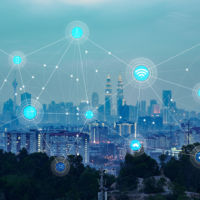The Future of Consumer Experience: IoT & Changing B2C Relationships
by Hugh Williams on 31st Aug 2018 in News


In this piece for RetailTechNews, Rob Prevett, founder, Disruption Summit Europe, goes into detail on how the internet of things (IoT) is going to revolutionise the future of customer experience. It’s no major claim that the IoT is going to fundamentally change the nature of interactions between businesses and consumers. After all, better connections mean better business, right?
However, as IoT technologies develop at a rapid pace, with new applications across almost every industry, the nature of what it means to be a connected business changes. The IoT essentially enables the analysis of unstructured data taken from any connected item, and thus making it far easier to collect and explore. And this is particularly useful for B2C businesses when these connected items, devices, and gadgets are in the hands of the consumer.
For the retailer, it’s useful to consider how the IoT has changed (and is changing) customer journeys. So, what does all of this mean for the future of the much-vaunted ‘customer experience’ and of business-to-consumer relationships?
Customer experience is everything
Customer experience is becoming everything in today’s retail industry. And the strength of the IoT is in gathering data about how customers interact with various products or services. So, there is a clear benefit for those retailers who are able to understand the patterns of their customers’ behaviours towards their products and services. That way, they can shape them far better to suit consumers’ needs, wants, and desires. Which is why customer experience is becoming, in many ways, just as important as price and product performance to the retail industry.
So, how can the IoT and machine-to-machine (M2M) sensors be used to build better customer and brand experiences?
How fitness, fashion, and insurance brands use the IoT
In retail, one good example here is that of sportswear brand Under Armour, which released a digital health and fitness network called Under Armour Record. The app monitors the fitness and lifestyle behaviours of its users and the company is better placed to advertise its clothing, shoes, and other products that might be best suited to individual users, based on the data the company receives on their habits and preferences.
In the insurance sector, Aviva is blazing a trail with its partnership with other brands, because the IoT is such a powerful tool for improving customer journeys. Hence, Aviva has partnered with Canary smart home cameras to give customers peace of mind and cut down the number of claims that are made. Ocado has partnered with Amazon Alexa to build better voice-controlled deliveries and customer service with its online supermarket customers. And the forward-thinking retailer has already started looking at incorporating other smart devices – smart coffee machines, fridges, and so on – into its longer term strategy.
The ultimate aim, of course, is perfectly personalised promotions to its customers that also help the supermarket brand to best match supply to meet demand.
Connection, information, opportunities
The rule of the IoT is this: more connections creates more information, which creates more opportunities. The rate of the IoT’s expansion is clear. You just have to look at the growth of IoT providers like EVRYTHNG: “The market-leading internet of things platform for consumer product brands." EVRYTHNG states that it can turn products into "the ultimate owned digital media channel for […] consumer engagement", with a platform that offers consumers real-time rewards, bonuses, and messages based on time, place, product, historical data, and lifestyle data.
It’s not too hard to imagine why customers will soon lose interest in those brands that aren’t able to offer them such a personalised customer experience. So far, the initial uses of the IoT in the retail sector have been heavily reliant on mobile apps, and from data gathered through smart home devices such as Amazon Echo and Google Home. This is just the beginning. And as the IoT and machine-to-machine connectivity spreads to many more areas of our everyday lives, most customers won’t even need to open an app or talk to Alexa before Ocado, as per the above example, realises that they need more coffee.
That’s when those highly anticipated digital supply networks will really start to flourish!
How else could the IoT bring retailers closer to customers? To learn more about IoT connectivity and its impact on your business you can head over to this year’s Disruption Summit Europe.




Follow Fast Growth Brands